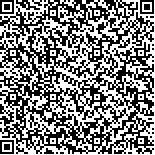附件
|
| 引用本文: | 杨东妹,陈宇炜,刘正文,吴庆龙.背角无齿蚌滤食对营养盐和浮游藻类结构影响的模拟.湖泊科学,2008,20(2):228-234. DOI:10.18307/2008.0215 |
| YANG Dongmei,CHEN Yuwei,LIU Zhengwen,WU Qinglong.Top-down effects of Anodonta woodiana on nutrient concentration & phytoplankton community composition in a microcosm ecosystem. J. Lake Sci.2008,20(2):228-234. DOI:10.18307/2008.0215 |
|
| |
|
|
| 本文已被:浏览 8846次 下载 5247次 |

码上扫一扫! |
|
|
| 背角无齿蚌滤食对营养盐和浮游藻类结构影响的模拟 |
|
杨东妹1,2, 陈宇炜1, 刘正文1, 吴庆龙1
|
|
1.中国科学院南京地理与湖泊研究所, 南京 210008;2.中国科学院研究生院, 北京 100049
|
|
| 摘要: |
| 利用微型生态系统研究背角无齿蚌(Anodonta woodiana)高密度养殖情况下对微型生态系统水柱中不同形态氮磷浓度和浮游藻类群落结构的影响,结果显示蚌的高强度滤食:(1)减少微型生态系统中悬浮态氮的含量,明显增加了水柱中的溶解性氮、磷含量,但是对总氮、总磷和正磷酸盐含量没有显著影响;(2)显著减少所有浮游藻类的数量和生物量,提高水体透明度,同时迅速改变微型生态系统中浮游藻类的群落结构,降低了微囊藻等蓝藻的数量及其所占的相对百分比,而绿藻所占的比例迅速上升;(3)导致微型生态系统的生态结构发生了显著变化,上行效应(Bottom-up effects)在浮游藻类与营养盐的关系方面发生了变化,实验组水柱中氮、磷含量与浮游藻类的相关关系显著降低;(4)并不能有效降低微型生态系统的富营养水平. |
| 关键词: 微型生态系统 背角无齿蚌 氮 磷 浮游藻类 生物调控 |
| DOI:10.18307/2008.0215 |
| 分类号: |
| 基金项目: |
|
| Top-down effects of Anodonta woodiana on nutrient concentration & phytoplankton community composition in a microcosm ecosystem |
|
YANG Dongmei1,2, CHEN Yuwei1, LIU Zhengwen1, WU Qinglong1
|
|
1.Nanjing Institute of Geography and Limnology, Chinese Academy of Sciences, Nanjing 210008, P. R. China;2.Graduate School of Chinese Academy of Sciences, Beijing 100049, PR. China
|
| Abstract: |
| Microcosm experiments were conducted to study the impacts of intensive cultivation of Anodonta woodiana on nutrientconcentration (different forms of phosphorus and nitrogen) and phytoplankton community structure. The results showed that thebivalve increased the concentration of total soluble phosphorus, total soluble nitrogen, and water transparency, but had decreased theconcentration of particle nitrogen. There were, however, no significant influences on the total phosphorus, total nitrogen, andortho-phosphorus. The intense filter feeding of Anodonta woodiana strongly restrained the growth of phytoplankton. Apparentchanges of phytoplankton community structure were observed. The percentage of Cyanobacteria sp. decreased greatly, while thepercentage of Chlorophyte sp. increased during the first 30 days' experiment. There was a slight increase of Bacillariophyte sp.percentage, but no change of Cryptophyte sp. The bottom-up effect of nutrient (i.e. phosphorus, nitrogen) on phytoplankton, whichwas significant in the control (no feeding), had been shifted to the strong top-down effects based on the Spearman correlation analysisbetween nutrient concentration and biomass of phytoplankton. With the decreasing of phytoplankton abundance, a sort of filamentousalga, Ulothrix sp., and some attached algae had gradually inhabited in the microcosm system. This study suggested that the use ofintensive bivalve for bio-manipulation may not be a good method to changenge the eutrophication status significantly, although itssuppression of phytoplankton and improving of water transparency were observed in the microcosms. |
| Key words: Microcosm bivalve phosphorus nitrogen phytoplankton bio-manipulation |
|
|
|
|